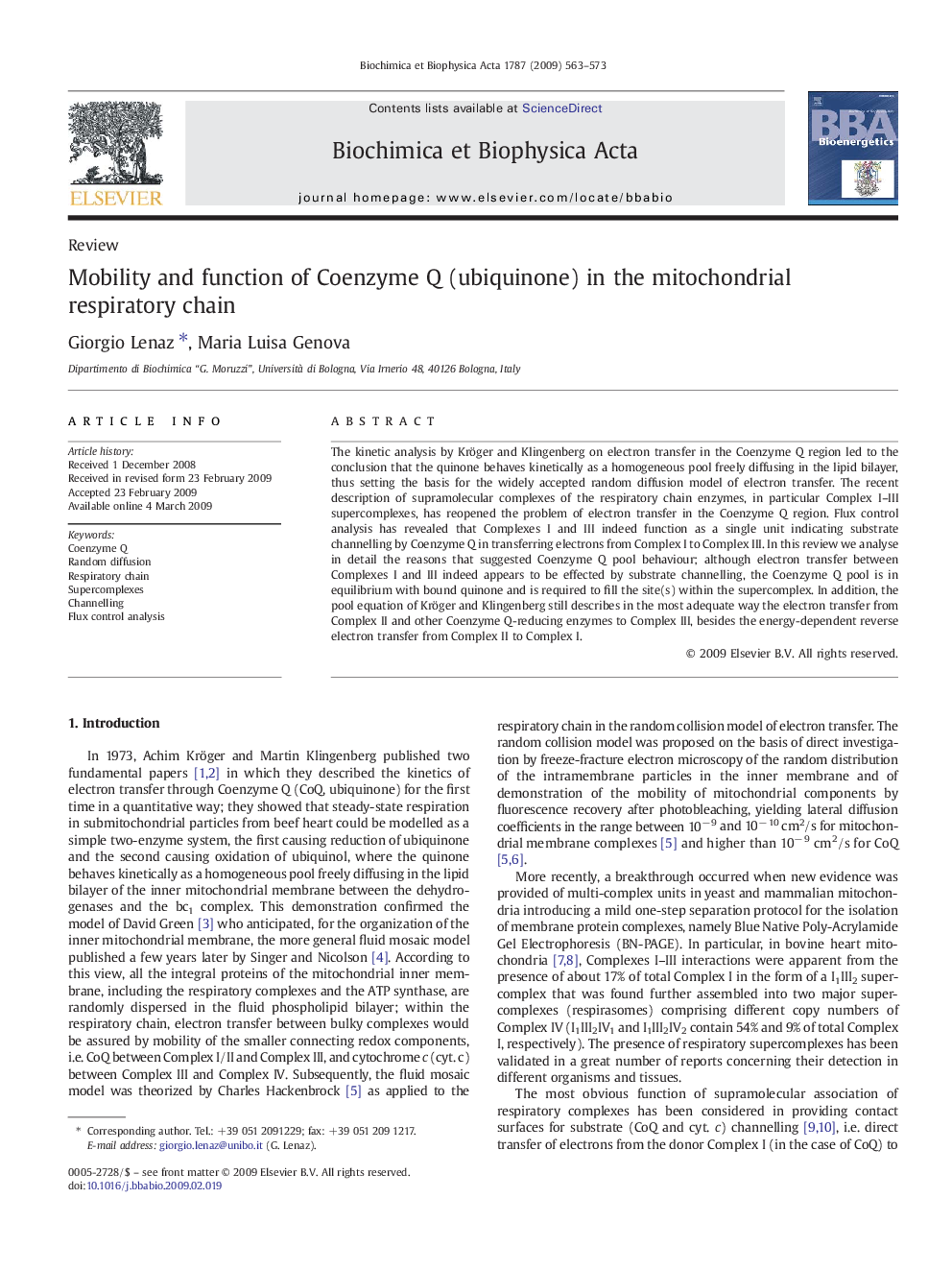| Article ID | Journal | Published Year | Pages | File Type |
|---|---|---|---|---|
| 1943090 | Biochimica et Biophysica Acta (BBA) - Bioenergetics | 2009 | 11 Pages |
The kinetic analysis by Kröger and Klingenberg on electron transfer in the Coenzyme Q region led to the conclusion that the quinone behaves kinetically as a homogeneous pool freely diffusing in the lipid bilayer, thus setting the basis for the widely accepted random diffusion model of electron transfer. The recent description of supramolecular complexes of the respiratory chain enzymes, in particular Complex I–III supercomplexes, has reopened the problem of electron transfer in the Coenzyme Q region. Flux control analysis has revealed that Complexes I and III indeed function as a single unit indicating substrate channelling by Coenzyme Q in transferring electrons from Complex I to Complex III. In this review we analyse in detail the reasons that suggested Coenzyme Q pool behaviour; although electron transfer between Complexes I and III indeed appears to be effected by substrate channelling, the Coenzyme Q pool is in equilibrium with bound quinone and is required to fill the site(s) within the supercomplex. In addition, the pool equation of Kröger and Klingenberg still describes in the most adequate way the electron transfer from Complex II and other Coenzyme Q-reducing enzymes to Complex III, besides the energy-dependent reverse electron transfer from Complex II to Complex I.
